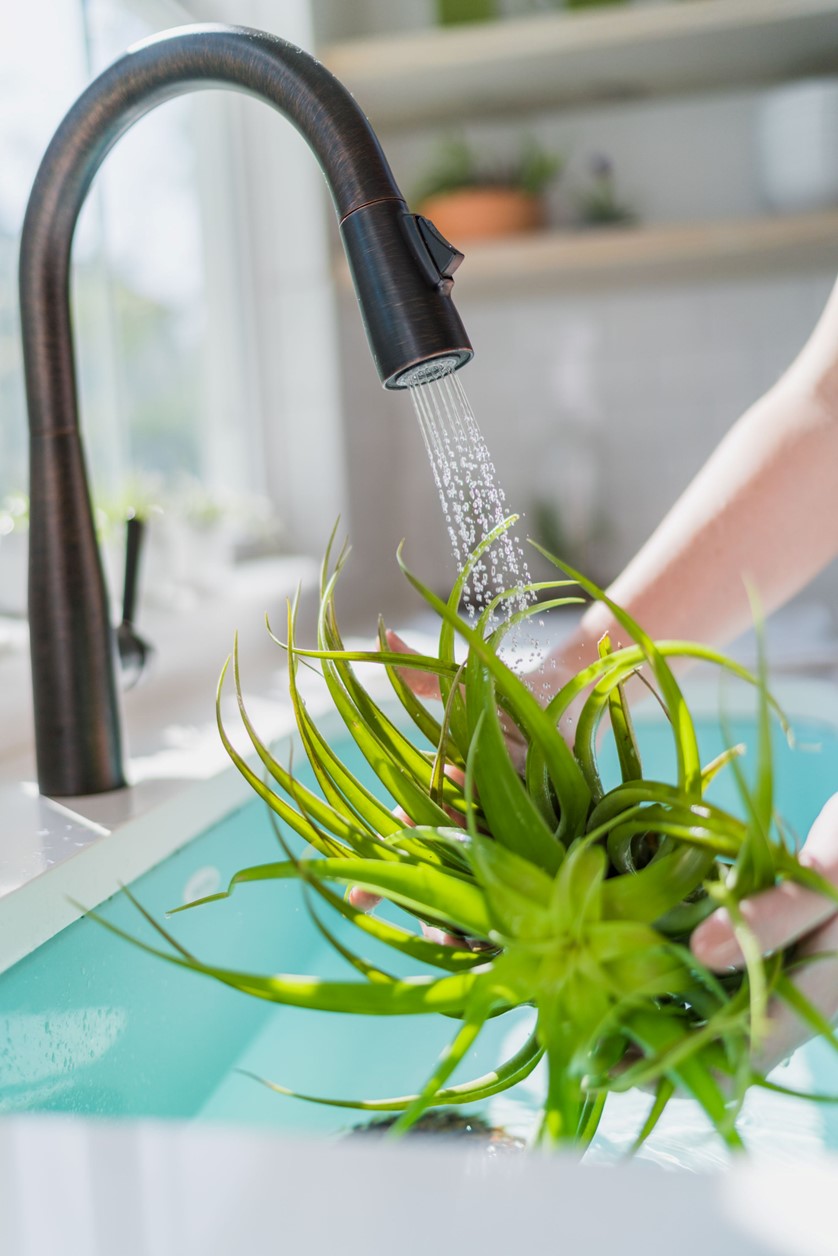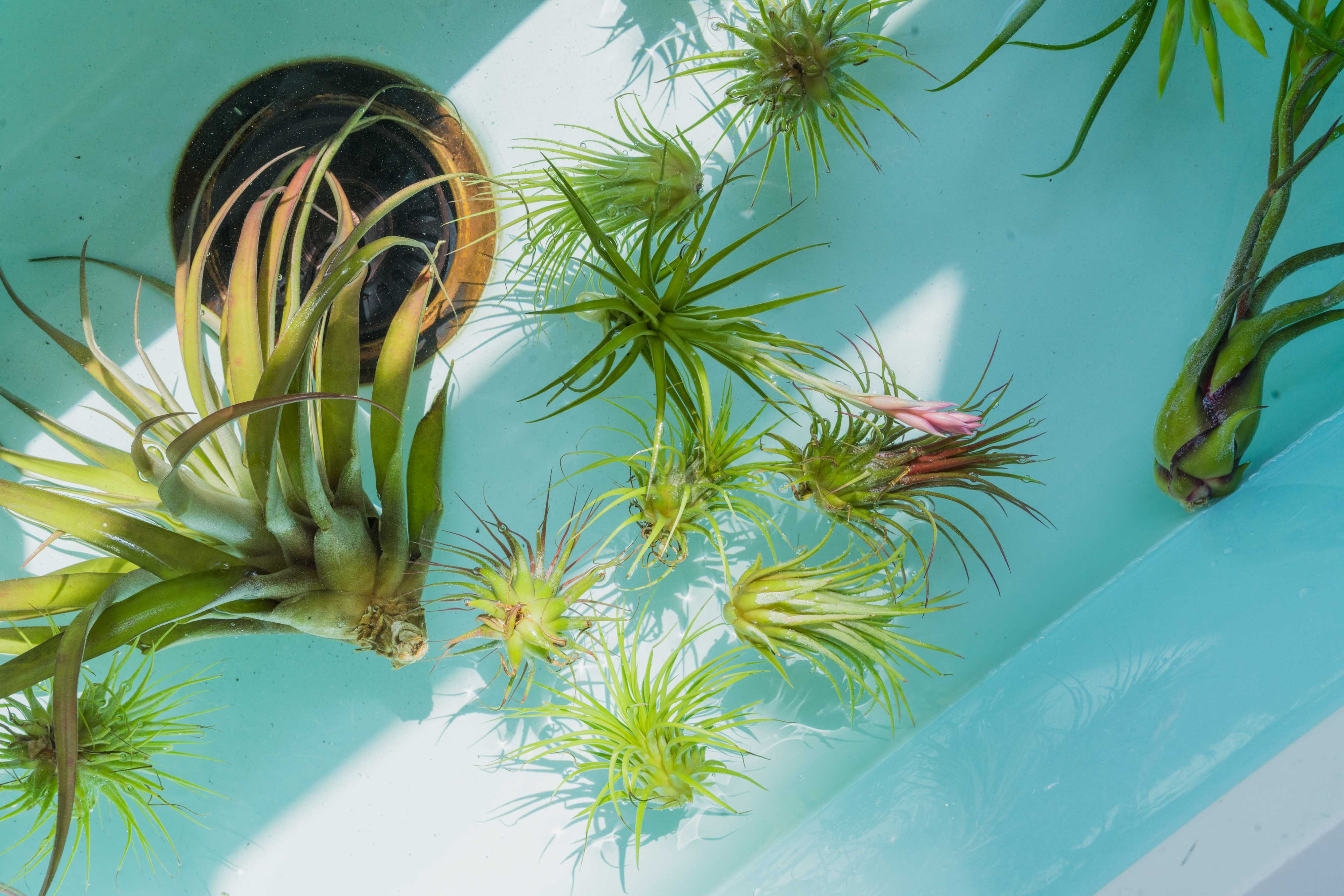Proper watering is at the heart of air plant care, and it's essential to understand the specific requirements to keep your plants healthy and vibrant. Here's a breakdown of crucial watering tips to keep in mind:
How to Water Your Air Plant
We suggest thoroughly rinsing your plants under running water or allowing them to soak in a water bath for 20-30 minutes as the primary watering method. You can use a bowl, sink, or even the bathtub for a group watering. After their bath,

gently shake the plants to remove excess water from both the base and leaves, then place them in an area with ample air circulation to dry completely within 3-4 hours. For interim hydration, misting the plants using a spray bottle works effectively. If your plant is in bloom, opt for rinsing rather than submerging it in water, and handle the delicate flowers with care.
Watering Frequency
Your plants should be watered at least once a week. The frequency of watering depends on your location's climate. In warmer regions or areas with low humidity, air plants may need extra water two to three times weekly. Using a spray bottle to mist the plants every few days in between regular waterings can maintain their hydration. However, the preferred method is soaking the plants, as it yields the best results. For more information about keeping your air plants properly hydrated, read our Air Plant Watering: Hydrated vs Dehydrated Plants blog.
Understanding Different Varieties
Different varieties of air plants have specific environmental requirements. Those with soft, thin leaves, including Spanish Moss, thrive in cooler temperatures. If you notice leaves curling dramatically or appearing droopy, move them indoors. These plants require adequate air circulation and should be kept away from direct sunlight and enclosed receptacles.
On the other hand, air plants with stiff or thicker leaves, such as Xerographicas, are hardier and require less water. They adapt well to warmer, drier conditions and are more tolerant of direct sunlight.
Consider Your Display
If you choose to display your air plants in containers like terrariums or bowls, always remove them before watering. Enclosed vessels can trap moisture, leading to rot, primarily starting at the base of the plant. Regularly check the base of your plants for signs of rot and adjust your watering routine accordingly.
If you plan to secure your air plant to objects like driftwood, select materials that can be immersed with the plant and will dry completely. Ensuring proper drying prevents moisture buildup, reducing the risk of rot.

Mastering the art of watering air plants involves a keen understanding of their individual needs and environmental factors. By following the guidelines mentioned above and observing your plants closely, you can create an optimal environment for your air plants to flourish. Remember, each air plant is unique, so be attentive to their responses and adjust your care routine accordingly. With the right balance of watering, proper air circulation, suitable sunlight, and temperature control, your air plants will thrive, adding a touch of natural elegance to your living space.
Stay up-to-date in the air plant world by following us on Facebook, Instagram, and TikTok!



Leave a comment